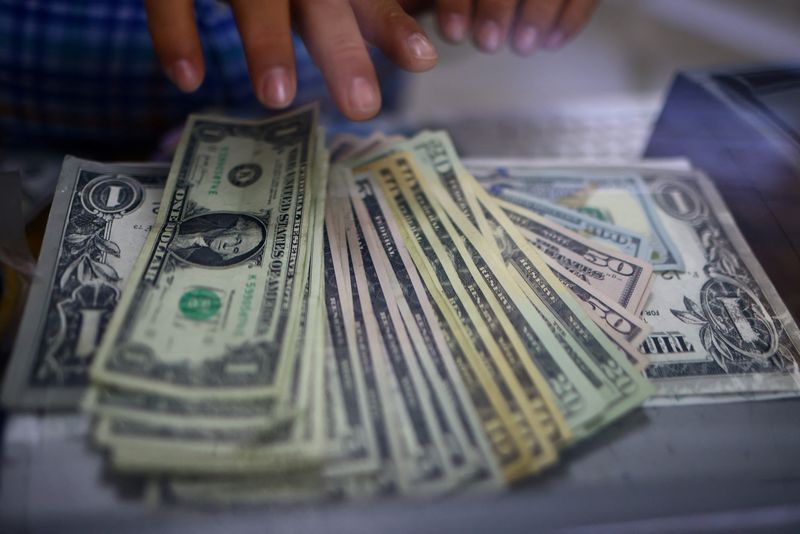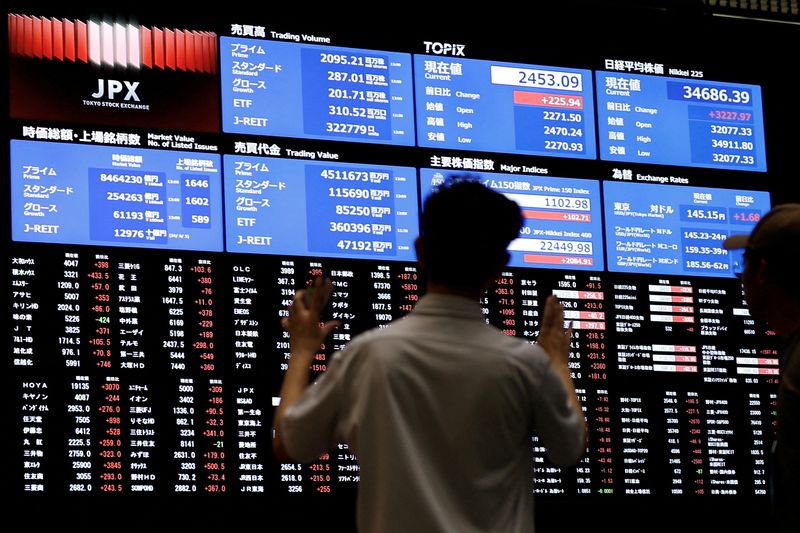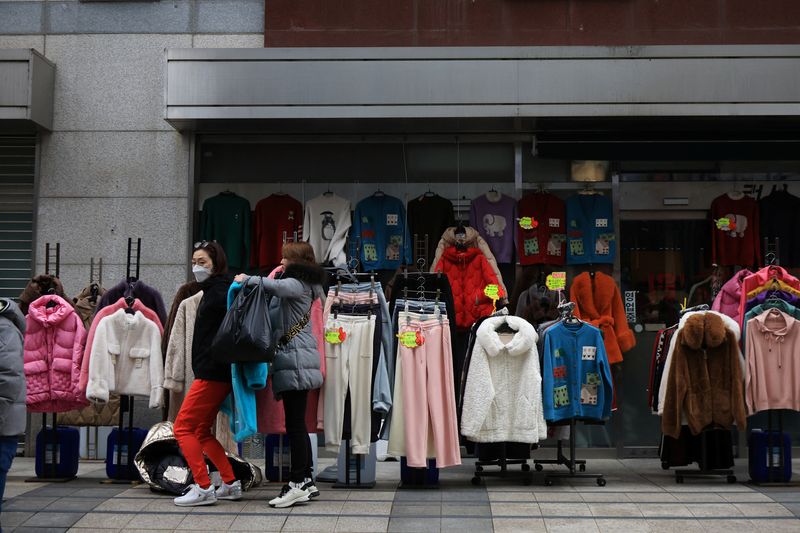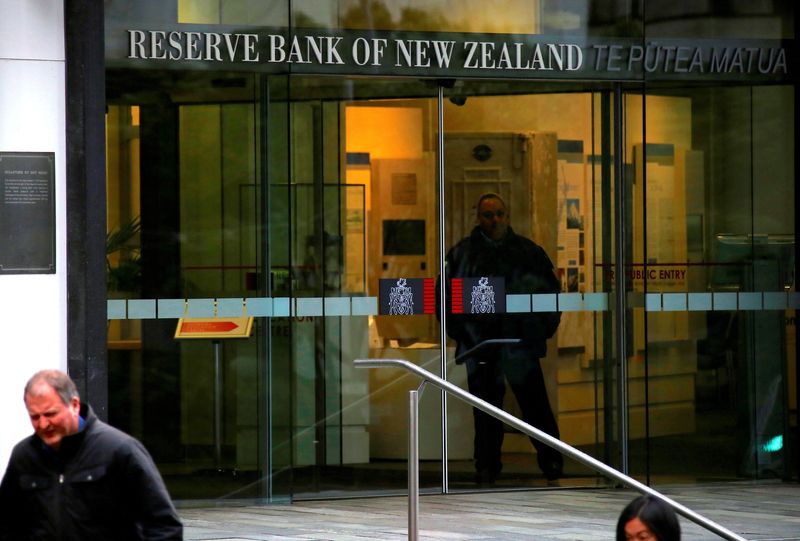Select Language

By Tommy Reggiori Wilkes
LONDON (Reuters) - Britain and the European Union must turn their "first steps" to rebuild trust into a "steady walk" as they confront common challenges, the president of the Eurogroup of euro zone finance ministers said on Tuesday.
Addressing representatives of Britain's financial industry, Paschal Donohoe said his discussions with UK finance minister Rachel Reeves included pensions system reform and unlocking longer-term savings to boost capital markets, as well as the euro zone's drive for an elusive capital markets union.
"Of course, the UK and EU each have to make their own decisions about how to make progress. However, it is really welcome that we have moved onto a new footing in our relationship which allows us to exchange views on these important topics for our citizens and businesses," he said.
"More broadly, I strongly welcome the UK Government's intention to strengthen and deepen relations with the EU," Donohoe, an Irish government minister, told an audience at the medieval Guildhall, home of the City of London Corporation.
Britain's Prime Minister Keir Starmer has sought to reset relations with the EU since coming to power this summer, with improved ties at the heart of his efforts to boost Britain's economic growth.
Donohoe said he welcomed the UK-EU Memorandum of Understanding on Financial Services, signed last year, which enabled meetings of the Joint EU-UK Financial Regulatory Forum.
In a speech titled 'Financing Our Future', the Eurogroup president said progress on a euro zone capital markets union was vital.
"At a time of growing dissatisfaction about the role of market-based solutions and at a time of such widespread budget challenges, making further progress on Capital Markets Union is essential," he said.
Recent work between member states signalled "a sea change in attitudes and political determination".
"To play the 'devil's advocate', without a true capital markets union in Europe, I think the green transition as one prime example, is far less likely to happen," he told the audience in London.

SINGAPORE (Reuters) - Chip shares dragged Asian indexes lower on Wednesday and European futures fell after growth concerns drove the steepest selloff in a month on Wall Street and investors wiped $279 billion from the value of market darling chipmaker Nvidia (NASDAQ:NVDA).
Oil hit year-to-date lows in Asia trade, the safe-haven yen rose, Japanese stocks fell more than 3% and the regional shares ex-Japan dropped nearly 2%. [MKTS/GLOB]
Here are analyst and investor comments on market moves:
NICK FERRES, CIO, VANTAGE POINT ASSET MANAGEMENT, SINGAPORE
"The ISM manufacturing index poured cold water on the benign growth outlook.
"Although equities have responded enthusiastically to the dovish rate outlook ... a range of key leading indicators suggest that macro conditions appear likely to deteriorate more sharply looking forward. In that context, the S&P 500 valuation multiple, equity and credit premium offer insufficient compensation for risk.
"We fear another drawdown phase over the coming weeks."
JUN BEI LIU, PORTFOLIO MANAGER, TRIBECA, SYDNEY
"People are taking a bit of profit off.
"There's nothing fundamentally wrong with the equity market. If anything, things are actually looking pretty good. You've got 25 basis point cuts to start and quite a few to follow and the economy is slowing but not collapsing.
"The next few months will probably see the bottom of earnings and for investors, in the next few months is where you deploy into a lot of those opportunities."
STEVEN LEUNG, EXECUTIVE DIRECTOR OF INSTITUTIONAL SALES, UOB KAY HIAN, HONG KONG
"Hong Kong is pretty weak, so whenever we see a negative signal like that from the U.S., Hong Kong will be performing even worse.
"People are thinking the current situation is different to the one in August, due to the unwind of the yen carry trade. This time, it's not because of that, it's more because of the U.S. economy. It's more scary, because it's not a technical reason, it's a more fundamental issue."
JASON TEH, CIO, VERTIUM ASSET MANAGEMENT, SYDNEY
"The question is how fast the economy slows down while the Fed cuts rates because if they are behind the curve, then the markets will continue to sell off. It's that tightrope right now and the market is trying to figure it out.
"When you look at Nvidia as a market leader, it's not holding up despite very strong profits. There's an old saying - if the troops can't follow the generals it's a warning sign ... if the Nvidias and Apples and Microsofts cannot hold up the market, that's it we're in a bear market."
MICHAEL ARONE, SPDR CHIEF STRATEGIST, STATE STREET GLOBAL ADVISORS, BOSTON
"What I expect is that we’ll see a continued rotation away from technology stocks leading the way to broader leadership. That’s happening because interest rates and inflation are both falling and that should help to close the gap in earnings growth between the technology sector and the rest of the market."
SAM STOVALL, CHIEF INVESTMENT STRATEGIST, CFRA, NEW YORK
"I think investors just succumbed to seasonality ahead of what they fear will be a double dose of declines in an election year in both September and October, and they piled on to those stocks that had lots of profits booked.
"This may be a short week but it will be an important and crucial week one for investor confidence; people are going to remain on edge."
STEVE SOSNICK, MARKET STRATEGIST, INTERACTIVE BROKERS, GREENWICH, CT
"There’s a bit of a post-Nvidia earnings hangover going on today. Those earnings last week were fine; they exceeded expectations. But the magnitude of the beats is shrinking quarter by quarter and that’s not lost on investors.
"There’s concern about what the job numbers are going to show, about seasonality. That’s why the VIX is higher. I don’t think the ISM number, showing a weaker manufacturing sector but higher prices, was at all helpful. And there you have it. Gravity."
MICHAEL GREEN, PORTFOLIO MANAGER, SIMPLIFY, SAN FRANCISCO BAY AREA
"People are over-allocated to Nvidia and many of these names and they’re trying to reduce that exposure. It just has the potential for these things to sell off quite significantly."

TOKYO (Reuters) - Japan's budget demands are likely to hit a record for the next fiscal year, exceeding $800 billion, people familiar with the matter said on Wednesday, as the world's No. 4 economy struggles to slow spending and as debt-servicing costs rise.
A new leadership race could complicate Tokyo's efforts to restore fiscal discipline as voting this month for the ruling party's new leader, and by extension the next prime minister, risks triggering a snap parliament election.
Sources declined to be identified as the matter is still private.
The record 117 trillion yen ($804 billion) budget requests come as the Bank of Japan shifts away from its decade-long stimulus programme.
That means the government can no longer rely on ultra-low borrowing costs and on the central bank to effectively bankroll debt.
The assumed interest rate would increase to 2.1% for the year starting in April from the current year's 1.9%, boosting debt-servicing costs for interest payments and debt redemption to 28.9 trillion yen from 27 trillion yen for the current year, according to the finance ministry.
Government ministries were allowed to request unspecified amounts of money for measures to expand childcare and mitigate rising prices, which would lift budget demands.
Japan, saddled with the industrial world's heaviest debt at more than twice the size of its economy, has affirmed its pledge to deliver a primary budget surplus by the next fiscal year.
Fixing tattered public finances has emerged as an oft mentioned topic in the ruling party's leadership election scheduled for Sept. 27.
Kono Taro, the digital transformation minister running in the race, described the current fiscal state as an "emergency situation," saying Japan has to regain fiscal discipline.
Another candidate, Takayuki Kobayashi, said he plans to launch a fresh package to ease the pain of rising prices.
"The economy should be prioritised over finance," he said last month.
Several lawmakers have told Reuters there is a possibility energy subsidies could be extended further to support households.
"With a looming lower house election ahead, calls for more spending could grow," Saisuke Sakai, senior economist at Mizuho Research and Technologies, said. A failure to streamline spending would make it difficult to achieve a primary budget surplus, he added.
($1 = 145.4500 yen)

By Hari Kishan
BENGALURU (Reuters) - House prices in most key markets will rise modestly this year and next on expectations mortgage rates will fall further and help to marginally improve affordability of expensive property, a Reuters poll of analysts showed.
Most central banks were expected to start cutting interest rates sometime this year, or have already done so, with the U.S. Federal Reserve predicted to start at its Sept. 17-18 meeting.
That is providing housing prices in developed countries, contending with low supply of property that is affordable to most new homebuyers, impetus to climb modestly higher.
The Reuters poll of nearly 150 housing analysts taken Aug. 19-Sept. 3 covering the U.S., Britain, Germany, Canada, Australia, New Zealand, China, Dubai and India showed average home prices in almost all of these markets will rise this year and next.
But compared with recent episodes of expected central bank policy easing, the forecast price rises are tame.
While median predictions showed the change in average home prices in 2024 to vary between markets from a modest 1.4% decline to a rise of around 8%, the overall outlook was positive with analysts upgrading their outlook for five of nine housing markets surveyed from three months ago.
"Falling mortgage rates across many markets will strengthen the position of aspiring home purchasers, but only modestly, with affordability pressures already at breaking point," said Matthew McAuley, global property sectors research director at JLL.
"Increasingly large proportions of the populations of countries such as the U.S., Canada, Britain, France, Germany, Australia and Japan will rely on income-driven housing models to satisfy their housing needs."
A near-80% majority of analysts, 82 of 106, who answered an additional question said affordability will improve for first-time homebuyers over the coming year. The remaining 24 said it would worsen.
But with supply still tight in most countries, many aspiring new home buyers are likely to remain renters in coming years, and pay even more to rent.
Urban home rents were expected to outpace consumer inflation over the coming 12 months in all the countries that were surveyed, according to median predictions from analysts who answered a separate question.
"In a higher interest rate environment, prime rents are continuing to outperform capital values... Low levels of stock in many locations and higher numbers of would-be buyers are driving the trend in many prime rental markets," said Justin Marking, head of global residential at Savills.
Average U.S. home prices were expected to rise 5.4% in 2024, 3.3% next year and 3.4% in 2026.
Much of that price appreciation has to do with homeowners who have locked in low 30-year mortgage rates, most under 5% and some even below 3%, and who are unwilling to part ways with their homes on such cheap deals.
While the Fed is widely expected to start cutting rates in September and by a total of 75 bps by year-end, a lack of adequate supply is already underpinning a market where average house prices are well above their pandemic-era peak.
Average home prices in Australia were forecast to rise more than 6% this year, again on tight supply, bringing average prices above their pandemic peak too.
"It is worth noting though, that we don't anticipate a material improvement in affordability, with the unaffordability of houses likely to be structurally higher than prior to the pandemic over the short-to-medium term," said Johnathan McMenamin, senior economist at Barrenjoey.
In neighboring New Zealand, where prices surged over 40% during the COVID-19 pandemic, they were expected to rise only 1%.
In India, demand for luxury properties from cash-rich individuals was expected to drive house prices even higher over the next couple of years. Despite demand coming from a wealthy few in a country of 1.4 billion, that translates into a sizeable market, enough to push average home prices up by around 8% this year and 6% next.
The battered German housing market, where house prices plunged 7.2% last year, was expected to stabilise in the coming months with a 1.4% fall this year, followed by a 2% rise in 2025.
(Other stories from the Q3 global Reuters housing poll)
(Other reporting and polling by Indradip Ghosh, Pranoy Krishna, Jonathan Cable, Sarupya Ganguly, Susobhan Sarkar, Devayani Sathyan and Vijayalakshmi Srinivasan; Editing by Ross Finley and Jonathan Oatis)

By Arriana McLymore
NEW YORK (Reuters) - Two leaders of the U.S. Consumer Products Safety Commission are calling for the agency to investigate e-commerce retailers Shein and Temu after "deadly baby and toddler products" were sold on both websites, according to a letter posted on the U.S. CPSC website on Tuesday.
U.S. CPSC Commissioners Peter Feldman and Douglas Dziak want the agency to evaluate how Singapore's Shein, China's Temu and other foreign-owned e-commerce platforms comply with its rules, handle relationships with third-party sellers and represent imported products.
Shein and PDD Group's Temu, which both ship cheap merchandise into the U.S. from China, are raising "specific concerns" for the Commission for their use of de minimis, a rule exempting packages valued at $800 or less from tariffs if they are sent directly to shoppers.
Critics of Shein and Temu attribute low prices and de minimis to Shein and Temu's success in the U.S. Both companies have also come under scrutiny for the quality of their products.
A bipartisan group of U.S. lawmakers last year planned to introduce a bill to eliminate the de minimis, which is widely used by e-commerce platforms including third-party sellers on Amazon.com (NASDAQ:AMZN) and Walmart (NYSE:WMT).com.

By Ankur Banerjee
SINGAPORE (Reuters) -The dollar inched higher and held close to a two-week high on Tuesday as investors geared up for a slew of economic data, including Friday's U.S. payrolls, that could influence the size of an expected interest rate cut from the Federal Reserve.
The euro was 0.16% lower at $1.1055, not far from the two-week low of $1.1042 it touched in the previous session, while sterling eased 0.17% to $1.3124.
That left the dollar index, which measures the U.S. currency against six rivals, 0.11% higher at 101.77, just shy of the two-week high of 101.79 it touched on Monday. The index fell 2.2% in August on expectations of U.S. rate cuts.
Investor focus this week will squarely be on the U.S. payrolls data due on Friday after Fed Chair Jerome Powell last month endorsed an imminent start to interest rate cuts in a nod to the worries over the labour market.
Ahead of that, job openings data on Wednesday and the jobless claims report on Thursday will be in the spotlight.
Markets are pricing in a 69% chance of a 25 basis points (bps) cut when the Fed meets on Sept. 17-18, with a 31% probability of a 50-bps cut, CME FedWatch tool showed.
This week’s overload of labour data will be crucial in breaking the debate between a 25- or 50-bps cut in September, said Charu Chanana, head of currency strategy at Saxo.
"If the data remains robust, a 25 bps cut is more likely. However, a weak non-farm payrolls, particularly if it falls below 130,000 with another jump higher in unemployment rate, could push the rates market closer to pricing a 50 bps cut"
Economists surveyed by Reuters expect the addition of 165,000 U.S. jobs in August, up from an increase of 114,000 in the previous month.
Win Thin, Brown Brothers Harriman's global head of market strategy, said data last week confirmed what markets already knew. "That is, the U.S. economic growth remains robust, driven by strong consumption, even as disinflation continues slowly but surely."
Data on Friday showed personal consumption expenditures (PCE) price index - Fed's preferred measure of inflation - rose 0.2% in July, matching economists' forecasts, keeping the U.S. central bank on the path to cut rates.
"We are in a Goldilocks moment right now and so we continue to believe the Fed will start cutting rates this month in a very gradual manner," Thin said in a note.
Markets, though, anticipate 100 bps of cuts from the remaining three meetings this year.
Ten-year Treasury yields were little changed at 3.915% as trade resumed in Asia following a U.S. holiday on Monday.
Elsewhere, the yen fetched 146.50 per dollar, up 0.3% on the day but still close to the two-week low of 147.16 hit on Monday.
Analysts said the yen moves was likely just an unwind of Monday's drop when U.S. markets were closed leading to thin liquidity and sudden moves.
The Australian dollar fell 0.8 to $0.6737, ahead of the gross domestic product (GDP) report due on Wednesday, after rising 3.5% in August. The New Zealand dollar slipped 0.75% to $0.61875, having surged 5% last month. [AUD/]

By Tom Westbrook
SINGAPORE (Reuters) - Bond yields drifted higher on Tuesday, while currencies and Asia's stock markets steadied as investors waited on a raft of data to determine how deeply the U.S. can cut interest rates.
Ten-year Treasury yields were slightly higher at 3.919% and two-year yields rose a basis point to 3.935% as trade resumed in Asia following a U.S. holiday overnight.
Upbeat spending figures on Friday led markets to trim the chance of a half-point easing from the Federal Reserve. The U.S. ISM manufacturing survey due later in the day and particularly jobs data due on Friday will be crucial for the Fed's decision.
MSCI's broadest index of Asia-Pacific shares outside Japan ticked 0.1% lower. Japan's Nikkei rose 0.7% and S&P 500 futures were flat. The dollar has steadied along with U.S. yields as focus turns to Friday.
"It really boils down to Friday's number," said Raisah Rasid, global market strategist at J.P. Morgan Asset Management in Singapore, with policymakers looking for a cooling labour market to clear the way for rate cuts.
"We don't see any stress or indications that would necessitate a 50 basis point cut...the question is how long will risk assets continue to rally?"
Economists forecast the ISM survey improving but remaining in contractionary territory at 47.5 in August.
"I am not so sure the dollar will take too kindly to a weaker read," said Pepperstone analyst Chris Weston. "A number closer to 50 would likely compel dollar shorts to cover."
On Friday analysts are looking for a rise of 160,000 in jobs and a dip in the unemployment rate to 4.2%.

By Jihoon Lee
SEOUL (Reuters) -South Korea's consumer inflation slowed in August to the weakest in nearly 3-1/2 years, official data showed on Tuesday, supporting market expectations for an easing of monetary policy as early as next month.
The consumer price index (CPI) rose 2.0% from a year earlier, after gaining 2.6% the previous month, marking the slowest annual rise since March 2021.
It matched the median 2.0% increase tipped in a Reuters survey of economists and the central bank's medium-term inflation target of 2%.
"Going forward, unless there is any additional shock from weather conditions or global oil prices, consumer inflation is expected to stabilise in the lower 2% range," said Vice Finance Minister Kim Beom-seok.
Last month, the Bank of Korea held interest rates steady at their highest in nearly 16 years but revived expectations for a policy easing that some economists see happening as soon as October as growth concerns overshadow inflation worries.
The central bank said Tuesday's data showed inflation was stabilising more quickly than in other major economies and it expected prices to maintain a stable trend.
"The data supports a rate cut in October, which is seen most likely for now, although it is still not a sure thing due to growing household debt," said Ahn Jae-kyun, a fixed-income analyst at Shinhan Securities.
South Korea's treasury bond yields traded slightly down on Tuesday after three straight sessions of gains.
On a monthly basis, CPI was up 0.4%, the fastest in six months, after rising 0.3% the prior month and beating a forecast by economists for 0.3%.
Core CPI, excluding volatile food and energy items, rose 2.1% from a year earlier, slowing from the previous month's 2.2% rise and marking the weakest since November 2021.

By Makiko Yamazaki and Ritsuko Shimizu
TOKYO (Reuters) - Japanese companies cannot use a national security designation as a tool to thwart foreign takeovers, a senior finance ministry official said, pushing back at speculation Tokyo's foreign exchange act could be manipulated for protectionism.
The comments follow media reports retail giant Seven & i Holdings is seeking to be classified as "core" to national security under the Foreign Exchange and Foreign Trade Act (FEFTA) to fend off a buyout bid from Canada's Alimentation Couche-Tard.
The senior official, who declined to comment on individual deals, told Reuters the issue of "core" classification doesn't change the process of the government's security review in cases of foreign bids for companies designated as significant to Japan's economy or security.
Seven & i, with a market value of $38 billion, is currently categorised in the finance ministry's classification list as a company that conducts "designated", not "core", businesses.
Businesses considered "core" are those deemed crucial for national security, including nuclear power, space and semiconductors.
Foreign entities face stricter requirements to notify the government in advance when attempting to acquire a stake in a company with a business classified as "core" than they do when targeting companies in "non-core" sectors.
But in the case of acquiring control in any so-called "designated business", a would-be buyer must file prior notification regardless of whether the target is "core" or "non-core", the official said.
The official added that the classification doesn't affect the degree of scrutiny during its review on national security, saying that the government "will examine whether the transaction would pose risks to national security."
The ministry's classification list regarding prior notification requirements is based on surveys of all listed companies. The classifications there "are not something that would need government approval," the official said.
The official declined to be named due to the sensitivity of the issue.
When asked about the reported pursuit of the "core" tag, Seven & i said it replied to the ministry's latest survey by the Aug. 23 deadline detailing the company's current structure and businesses.
The survey is not related to Couche-Tard's buyout proposal, which the Japanese company revealed on Aug. 19, Seven & i said.
Convenience stores, Seven & i's mainstay business, are not a designated sector that requires FEFTA review, but the group has wide-ranging businesses including financials and security.
Japan in 2008 blocked the London-based Children's Investment Fund from buying shares in Electric Power Development Co, known as J-Power. That's the only deal that has been rejected under the FEFTA, but there are cases where plans have been modified or withdrawn during reviews, according to the finance ministry.

By Lucy Craymer and Wayne Cole
WELLINGTON (Reuters) - Lags in New Zealand's official economic data are creating a fog for policy makers that recently forced them to veer off course and cut interest rates a whole year earlier than projected, badly wrong footing financial markets.
Years of tight funding by successive governments have left statisticians struggling to keep up with a rapidly changing economy, and nowhere more so than with inflation.
The more than two-decade old system they use is not able to calculate monthly data, making the country rare among developed nations in reporting consumer price indexes (CPI) quarterly, rather than monthly. This makes it harder for the Reserve Bank of New Zealand (RBNZ) to spot turning points in a timely manner.
"We are behind in terms of most advanced economies," Karen Silk, RBNZ Assistant Governor, told Reuters in an interview. "Monthly CPI...(it) would be delightful to get that."
As recently as May, the central bank was seriously considering whether it needed to hike rates further to bring inflation to heel. By its next meeting in early July, private business surveys and card spending data from banks had made it more confident cost pressures were easing.
It had to wait another week for the official CPI report for the second quarter, which showed inflation slowing faster than most predicted.
By August, the outlook had swung 180 degrees and it cut rates a quarter point to 5.25%, flagging a lot more to come.
"We're still waiting to find out what the June GDP is, that's months back," Governor Adrian Orr said after the August decision. June quarter GDP is not due until Sept. 19 almost two months after the first reading on U.S. growth.
Stats NZ, the official data bureau, notes it is within the International Monetary Fund's 90-day guideline.
VOLATILE MARKETS
While only a small economy of 5.3 million people, the New Zealand dollar is widely traded and investors globally follow its markets. As a result, the RBNZ's sudden turn last month sliced a whole cent off the currency and sent bond prices surging.
Even the size of the island's population is in doubt as the government did away with paper departure cards in 2018, making the data less reliable and regularly revised. Stats NZ says COVID-19 had affected their modelling and that they were working to fix this.
This is made more important given the role migration has played in this economic cycle.
Andrew Lilley, chief rates strategist at Barrenjoey in Sydney, said statistics departments often had tight budgets as data was usually a low priority politically.
"For every 10 basis points that unemployment goes up unnecessarily because you have the wrong read on the data, that's 2,000 people who are out of work," Lilley said.
"If people knew this, they might be more willing to pay for good data collection and good statistics."
Funding of the bureau has jumped around 60% since 2020 to NZ$258 million ($160.76 million) to deal with new initiatives and cost pressure but took a hit this year as the government cut spending to reduce the budget deficit.
"There is always a case to increase funding to do more," said statistics minister Andrew Bayly. He added improving economic datasets was one of his priorities.
The system that Stats NZ currently uses to produce CPI was built more than 20 years ago where either someone went to stores to collect data or retailers were sent surveys. An improved system is being designed but completion remains some way off, Stats NZ said.
Economists use several methods to get a better read on where money is and isn't being spent, including internal bank card data.
ANZ Bank recently added extra questions to its business outlook survey to better gauge conditions.
Sharon Zollner, chief economist at ANZ Bank, said while more data was always better, there is a risk that monthly CPI could be volatile whereas quarterly figures can cut through that noise.
Stats NZ has worked to improve data, releasing selected indexes monthly that equate to roughly 45% of the CPI and include the more volatile components.
In 2019, it started a monthly jobs indicator.
Jason Attewell, general manager of economic and environmental insights at Stats NZ, said there were current constraints to getting new systems up and running or speeding up data publications.
"Stats does pretty well punching above our weight as a small, relatively speaking, national statistical office," he said, noting they produce more than 250 releases each year.
Grant Williamson, an investment advisor at Christchurch's Hamilton Hindin Green, said a monthly CPI with less lag would help.
"A little bit of money spent having more up to date data would be beneficial for everyone, including, obviously, the Reserve Bank," he said. "Having more up to date data could influence (investment) decision making on time a little."

